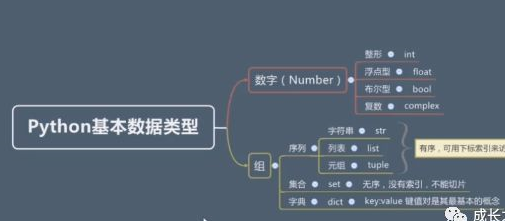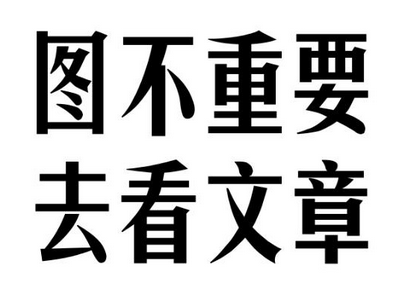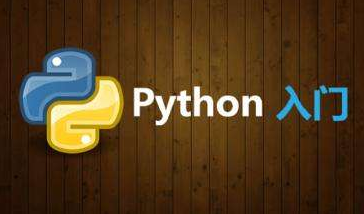


Python培训
400-996-5531
这篇文章为大家整理的一些python 数据基本类型的笔记,如同小字典一样,如果感觉有用,收藏下来,以备日后用到的时候不至于手忙脚乱!

// 表示取整
/ 表示除法 得 float
0b 2进制
0o 8进制
0x 16进制
转换:
bin(10) 转2进制
int(0b111) 转10进制
hex(888) 转16进制
oct(0b1111) 转8进制
bool 布尔类型:表示真、假
int(Ture) => 1
int(False) => 0
bool(1) => Ture
bool(0) =>False
非零 即为 True
字符串 非空 即为True
列表 元祖 等 非空 即为True
bool(None) => False
复数 36j
---------------------
str 字符串
单引号 双引号 三引号
'let\'s go'
"let's go"
'''
let's
go
'''
idle 换行
'hello\
world'
'''hello world
hello world'''
----------------
转义字符
无法 看见 的字符
特殊的字符
与语言本身语法有冲突的字符
\n 换行
\r 回车
\' 单引号
\t 横向制表符
print('hello \\n world') 不换行
print(r'C:\\Python36\\work')
字符串前面加小写r,表示原始字符串
>>> print(r'let's go')
File "<stdin>", line 1
print(r'let's go')
^
SyntaxError: invalid syntax
这个不能通过 加 r 来解决
字符串基本操作方法 字符串的运算
>>> a='hello'
>>> b=' world'
>>> c=a+b
>>> c
'hello world'
+为字符连接
>>> 'hello '*3
'hello hello hello '
>>> 'hello'[0]
'h'
>>> ' hello'[0]
' '
>>> ' hello'[-1]
'o'
>>> ' hello'[-3]
'l'
>>> ' hello'[-30]
Traceback (most recent call last):
File "<stdin>", line 1, in <module>
IndexError: string index out of range
- 表示从末尾数
>>> 'hello world'[0:5]
'hello'
范围截取 必须截取到指定字符的下一位
>>> 'hello world'[6:11]
'world'
>>> 'hello world'[6:20]
'world'
>>> 'hello world'[6:]
'world'
>>> 'hello world'[6:-1]
'worl'
>>> 'hello world'[-5:]
'world'
>>>
--------------------------------------

组的概念
列表 [ ]
>>> [[1,2],[3,4],[True,False]][0] 第一个
[1, 2]
>>> [[1,2],[3,4],[True,False]][2]第三个
[True, False]
>>> [[1,2],[3,4],[True,False]][0:2] 0-1
[[1, 2], [3, 4]]
>>> [[1,2],[3,4],[True,False]][-1:] 最后一个
[[True, False]]
>>> [1]+[2]
[1, 2]
>>> [1]*3
[1, 1, 1]
元祖 ()
>>> (1,2,3,4)[0]
1
>>> (1,2,3,4)[0:2]
(1, 2)
>>> (1,2,3,4)+(5,6)
(1, 2, 3, 4, 5, 6)
>>> (1,2)*4
(1, 2, 1, 2, 1, 2, 1, 2)
int,list[],str,tuple()
>>> type((1))
<class 'int'> 元祖只有一个的元素 括号按数学运算
>>> type(('a'))
<class 'str'>
定义只有一个元素的元祖 (1,)
定义空元祖 type(())
列表 和 元祖的区别
>>> '12345678'[0:7:2]
'1357'
>>> '12345678'[0:7:3]
'147'
>>>
判断 是否在
>>> 1 in [1,2,3]
True
>>> 4 in [1,2,3]
False
>>> 1 not in [1,2,3]
False
>>> 4 not in [1,2,3]
True
>>> max([1,2,3])
3
>>> min(1,2,3)
1
>>> min('bac')
'a'
>>> min('bacc')
'a'
>>> min('bacc ')
' '
ord函数获取 asscil
>>> ord('a')
97
集合 set {}
无序
不重复
>>> {1,1,2,2,}
{1, 2}
>>> len({1,2,3})
3
>>> 1 in {1,2}
True
>>> 1 not in {1,2}
False
>>> {1,2,3,4,5,6}+{3,4}
Traceback (most recent call last):
File "<stdin>", line 1, in <module>
TypeError: unsupported operand type(s) for +: 'set'
and 'set'
>>> {1,2,3,4,5,6} - {3,4} 差集
{1, 2, 5, 6}
>>> {1,2,3,4,5,6} & {3,4} 交集
{3, 4}
>>> {1,2,3,4,5,6} | {3,4,7} 并集
{1, 2, 3, 4, 5, 6, 7}
定义一个空的集合
type(set())

字典
很多个key 和 value
不能有相同的key 如有取最后一个
{'Q':'新月打击','W':'苍白之瀑','E':'月至降临','R':'月
神冲刺'}
>>> {1:'新月打击','1':'苍白之瀑','E':'月至降临','R':'月
神冲刺'}[1]
'新月打击'
>>> {1:'新月打击','1':'苍白之瀑','E':'月至降临','R':'月
神冲刺'}['1']
'苍白之瀑'
>>>
key : 必须是不可变的类型 int 'str' 元组可以
value:几乎可以是所有类型
定义一个空字典
>>> {}
{}
>>> type({})
<class 'dict'>
填写下面表单即可预约申请免费试听! 怕学不会?助教全程陪读,随时解惑!担心就业?一地学习,可全国推荐就业!
Copyright © Tedu.cn All Rights Reserved 京ICP备08000853号-56  京公网安备 11010802029508号 达内时代科技集团有限公司 版权所有
京公网安备 11010802029508号 达内时代科技集团有限公司 版权所有